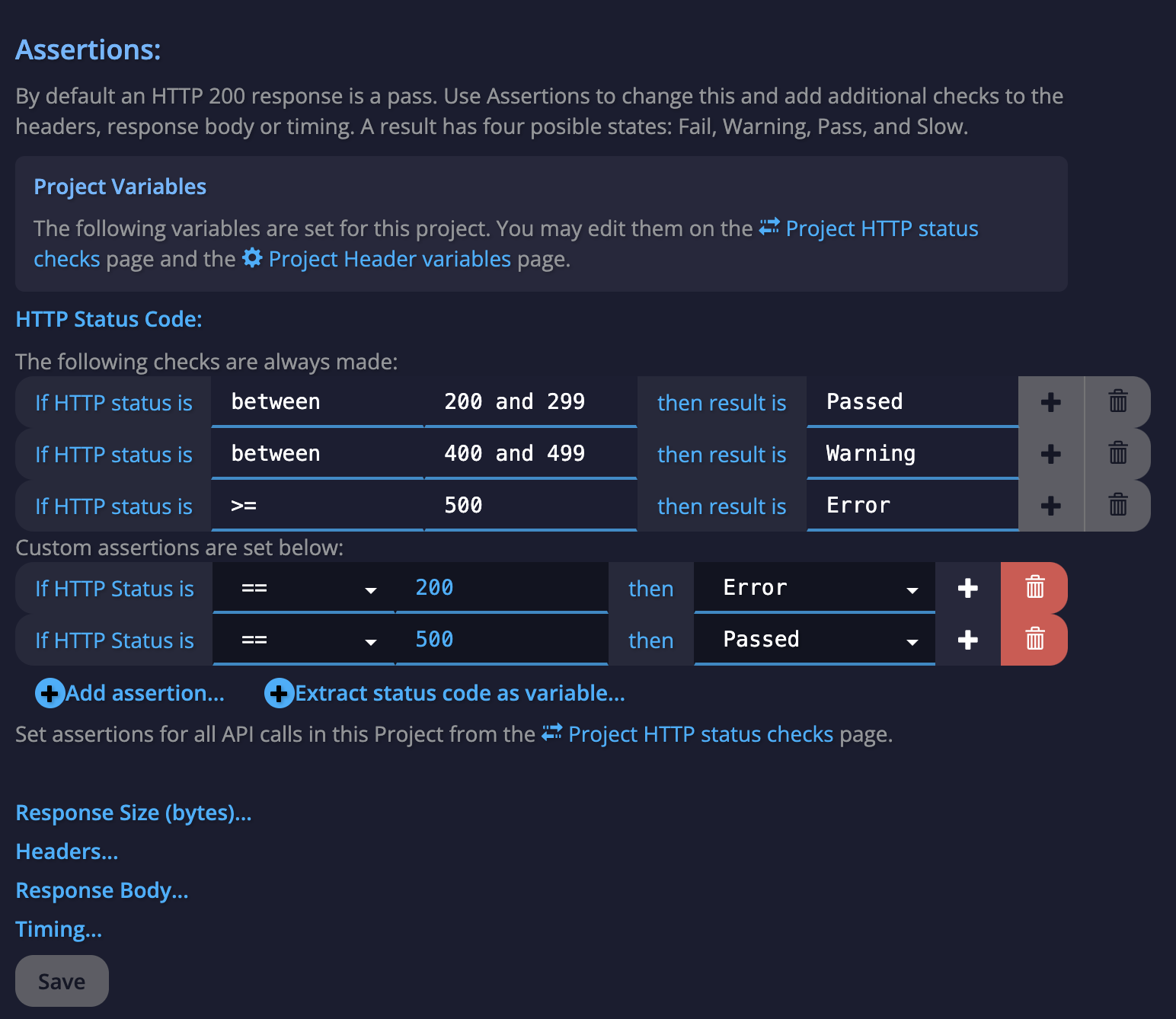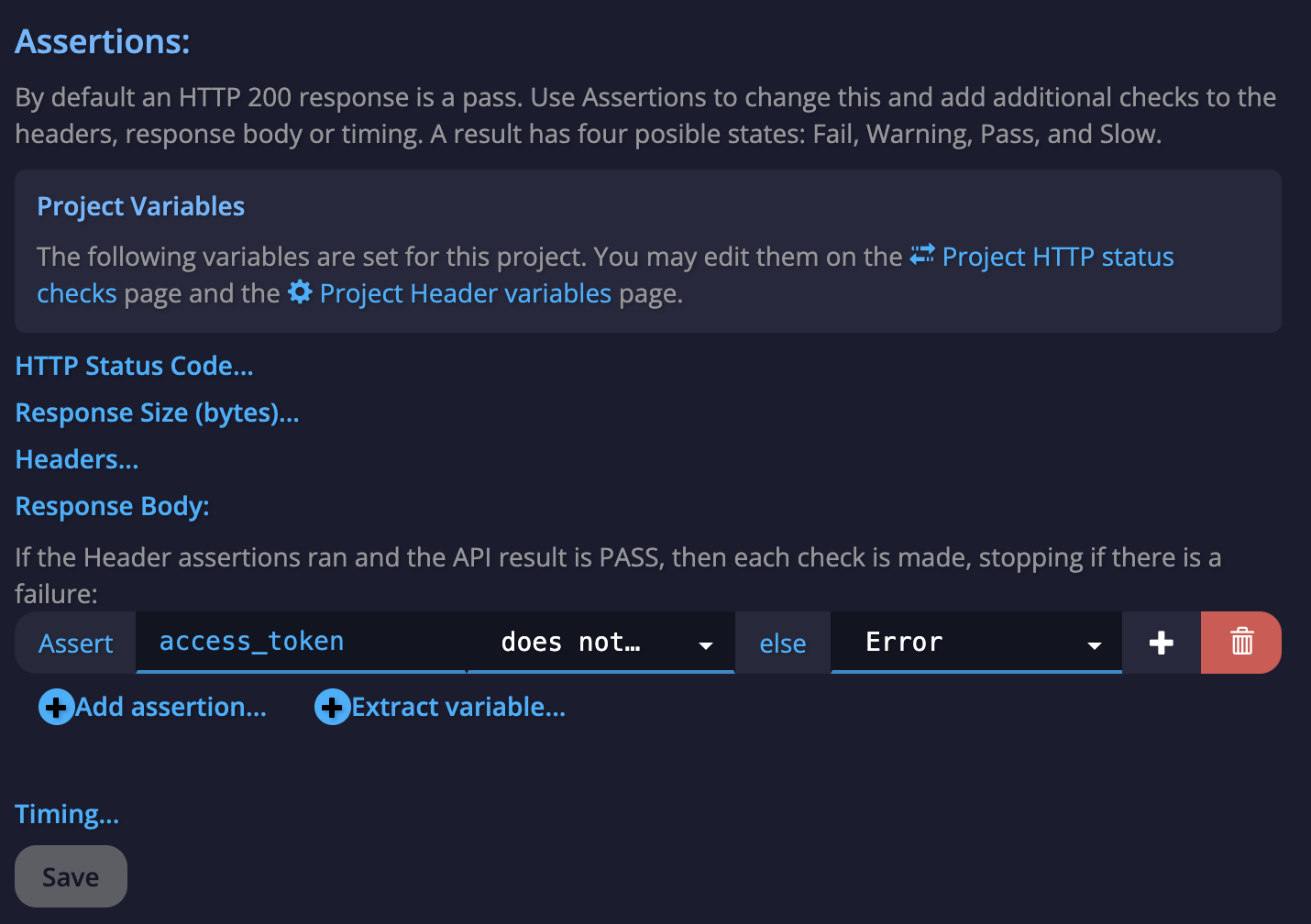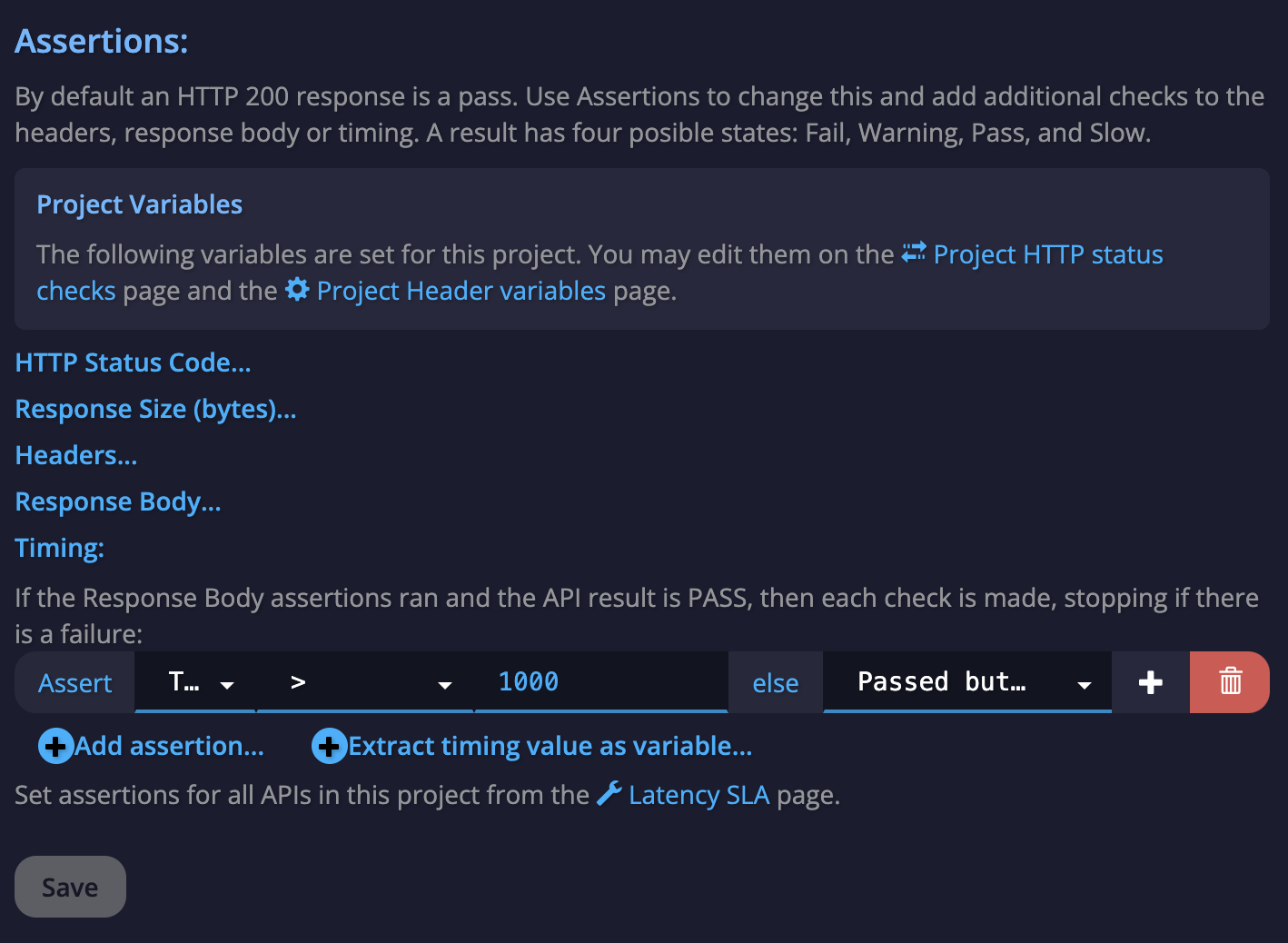Setting Assertions and Conditions
An overview to customizing unique conditions for each API endpoint
We make it simple to monitor API behavior and catch issues fast using conditions and assertions. This guide explains what both are, how to use them, and includes practical examples for all experience levels.
What are Conditions & Assertions?
- Conditions: Rules that decide what happens after an API endpoint is called (for example, only run the next step if the previous response was successful).
- Assertions: Checks that automatically verify part or all of your API response—like the status code, headers, or even the full response body—match what you expect.
How to Set Up Conditions & Assertions
-
Edit Your API Call
- Go to the API call you want to add checks to.
- Click on the "Conditions" (or "Assertions") tab.
-
Add a Condition/Assertion
- Click Add Condition or Add Assertion.
- Choose what you want to check: status code, header, response body,
_rawresponse, or response size.
-
Define What to Match
- Pick a check type (equals, contains, less than, etc).
- Enter what you expect to see (a number, keyword, or value).
-
Save & Test
- Save your API call settings.
- Test the call to make sure your assertions behave as intended.
Common & Advanced Scenarios
| Scenario | How to Assert | Example Value | Tip |
|---|---|---|---|
| Response status must be 200 | Status Code equals 200 | 200 | Override for non-standard codes if needed |
| Header is correct | Header: Content-Type equals application/json | application/json | Use for security or format checks |
| Body contains value | JSON path: user.id equals 5 or Body contains 'success' | 5 or 'success' | Good for key data fields |
| Full response is empty | _raw equals "" | "" | Checks for empty body directly |
| Body matches exactly | _raw equals '{"status":"ok"}' | '{"status":"ok"}' | Use for exact response matching |
| Body contains keyword | _raw contains 'activated' | 'activated' | Use for substring search |
| Response is empty (bytes = 0) | Response Size (bytes) equals 0 | 0 | Reliable for fully empty responses |
| Response size under a threshold | Response Size (bytes) lessThan 100 | 100 | Catch bloats or missing data |
| Complex validation | Use _raw or custom regex | — | Use when other checks aren't enough |
_raw Path & Response Size: Best Practices
- The
_rawpath lets you check the entire, raw response exactly as received—great for custom formats, binary data, or advanced cases.- Example: Check if the raw response is empty:
{ "assert": {"path": "_raw", "equals": ""} } - Example: Look for a keyword in the response:
{ "assert": {"path": "_raw", "contains": "success"} }
- Example: Check if the raw response is empty:
Response Size (bytes)helps catch empty or unexpectedly large responses regardless of how they're formatted.- Example: Assert the response is empty (0 bytes):
{ "assert": {"path": "Response Size (bytes)", "equals": 0} } - Example: Ensure response is not too big:
{ "assert": {"path": "Response Size (bytes)", "lessThan": 100} }
- Example: Assert the response is empty (0 bytes):
Example Scenario: Override default HTTP codes
ScenarioYou want to validate that a call cannot succeed from a particular geography or a call with an OAuth scope of a particular kind always fails. In these scenario, the expected behavior should fail, and a Pass indicuates a conformance problem.
For this example, let's override the default settings to set a HTTP 500 code as a pass and, therefore, a 200 code becomes a fail. Here are the relevant settings:

Check a Response Body for a Specific String
You can examine the returned response body for a variable. For instance, if you are expecting the response body to have an access token, you can set a condition for the API call to return an error if there is none.

Set an Alert based on a timing issue
You can set an alert depending on the length of the call or a component of the call. For instance, you can set the response type to Passed but slow if the Total Latency is greater than 1000 ms.

Recommendations & Tips
- Start with simple assertions (status codes, headers), then add deeper content checks as your needs grow.
- Use the
_rawpath for non-standard responses or when you need total control over matching. - Add response size checks as a safety net against payload changes or API errors.
- Update assertions as your API evolves.
- Check test results regularly and adjust your checks for new endpoints or behaviors.
Updated 3 months ago
Next up, using variables and how to do it.